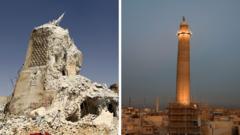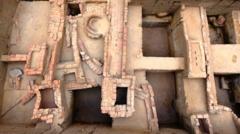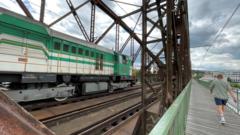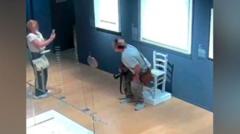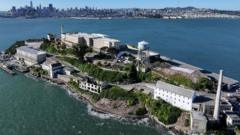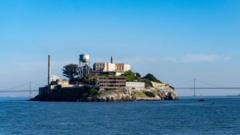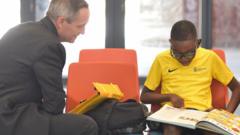Following its takeover by IS in 2014, Mosul, which was historically a beacon of religious tolerance, faced extreme violence and religious persecution. The city was liberated through a US-backed coalition's military operation, which led to significant destruction, particularly in the Old City. The al-Hadba minaret, a symbol of Mosul, was irreparably damaged during the conflict, prompting profound sorrow among locals.
As part of the restoration efforts, UNESCO has raised $115 million from various donors, focusing not only on rebuilding physical structures but also on restoring the sense of community that was shattered. This rebuilding effort involves local artisans and representatives from diverse faiths, emphasizing the importance of collaboration.
Father Olivier Poquillon, a Dominican priest overseeing the restoration of the al-Saa'a Convent, highlights the need for rebuilding trust among different communities to ensure a lasting recovery. The project has created more than 6,000 jobs, including the training of over 1,300 young people in traditional skills, with significant participation from women.
The restoration of landmarks such as al-Tahera Church and the al-Nuri mosque is a testament to the resilience of Mosul’s residents. Families are returning to their homes, fostering a sense of hope for future generations. As Ali al-Baroodi, a local photographer, expresses, the unfolding revitalization feels like witnessing a rebirth, symbolizing the enduring spirit of a once-vibrant city.
This transformative journey of Mosul not only marks a significant cultural revival but also serves as a reminder of the enduring strength of its communities in the face of adversity.
As part of the restoration efforts, UNESCO has raised $115 million from various donors, focusing not only on rebuilding physical structures but also on restoring the sense of community that was shattered. This rebuilding effort involves local artisans and representatives from diverse faiths, emphasizing the importance of collaboration.
Father Olivier Poquillon, a Dominican priest overseeing the restoration of the al-Saa'a Convent, highlights the need for rebuilding trust among different communities to ensure a lasting recovery. The project has created more than 6,000 jobs, including the training of over 1,300 young people in traditional skills, with significant participation from women.
The restoration of landmarks such as al-Tahera Church and the al-Nuri mosque is a testament to the resilience of Mosul’s residents. Families are returning to their homes, fostering a sense of hope for future generations. As Ali al-Baroodi, a local photographer, expresses, the unfolding revitalization feels like witnessing a rebirth, symbolizing the enduring spirit of a once-vibrant city.
This transformative journey of Mosul not only marks a significant cultural revival but also serves as a reminder of the enduring strength of its communities in the face of adversity.

